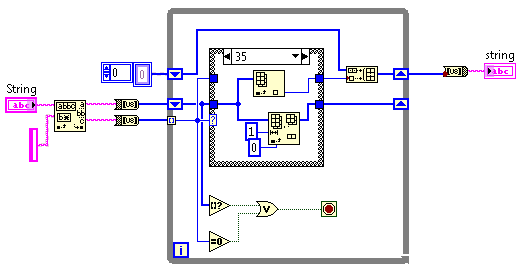改行を含まない単一の印刷可能なASCII文字列と、スペース()およびハッシュ(#)を含む複数行の「型」が与えられます。
文字列内の文字ごとに移動し、左から右、上から下の順に文字列の文字を使用してハッシュを置き換える必要があります。文字列が短すぎて金型を満たすことができない場合は出力を停止し、文字列が長すぎる場合は文字列を切り捨てて金型を正確に埋めます。
文字列/型の例(文字列が長すぎる、切り捨てられた):
Loremipsumdolorsitamet,consecteturadipiscingelit.Namsuscipitmagnanoneratgravidacondimentum.Vestibulumnecnisllorem.Fuscemolestieviverranibh,eueleifendnislplaceratnon.Namblanditturpislacus,vitaemolestielacusimperdietquis.Nullapulvinar,exquissollicitudinfacilisis,eratnullavolutpatlectus,etluctusenimvelitegetex.Inhachabitasseplateadictumst.Donecinterdumnullalacinia,sodalesloremin,eleifendturpis.Pellentesqueanisimi.Aeneannonlobortisdiam,quisaliquetquam.Aeneanaugueipsum,imperdietsedaliquetnon,volutpategetsapien.Nullampharetranullaquispretiumornare.Aliquamfermentumvestibulummassavitaevehicula.
###########################################################
##### ############## ###### ###### ######################
##### ## ###### # ##### ###### ######## ######
###### # # #### #### ##### ###### ####### ###### #####
###### ### ### ##### ###### ####### ####### #####
###### ##### ### ########### ###### ####### ### ######
###### ###### ### ########## ###### ##### #########
################## #### ##########################
###########################################################
出力例:
Loremipsumdolorsitamet,consecteturadipiscingelit.Namsuscipi
tmagn anoneratgravid acondi mentum .Vestibulumnecnisllore
m.Fus ce molest i evive rranib h,euelei fendni
slplac e r atno n.Na mblan dittur pislacu s,vita emole
stiela cus imp erdie tquis. Nullapu lvinar, exqui
ssolli citud inf acilisis,er atnull avolutp atl ectus,
etluct usenim vel itegetex.I nhacha bitas seplatead
ictumst.Donecinter dumn ullalacinia,sodalesloremin
,eleifendturpis.Pellentesqueanisimi.Aeneannonlobortisdiam,q
文字列/型の例(文字列が短すぎ、出力が停止しました):
This probably won't look good.
### ### ### ###
# # # # # #
### ### # # #
# # # # #
# # ### ###
対応する出力:
Thi s p rob abl
y w o n '
t l ook g o
o d .
バイト単位の最短コードが優先されます。
このWebサイトのアイデアの功績です。

